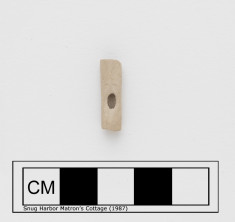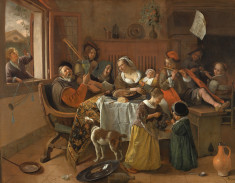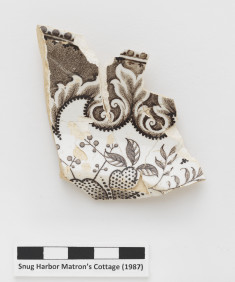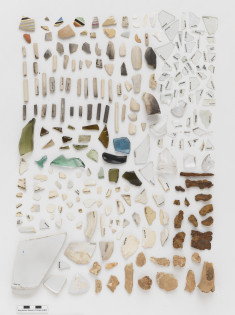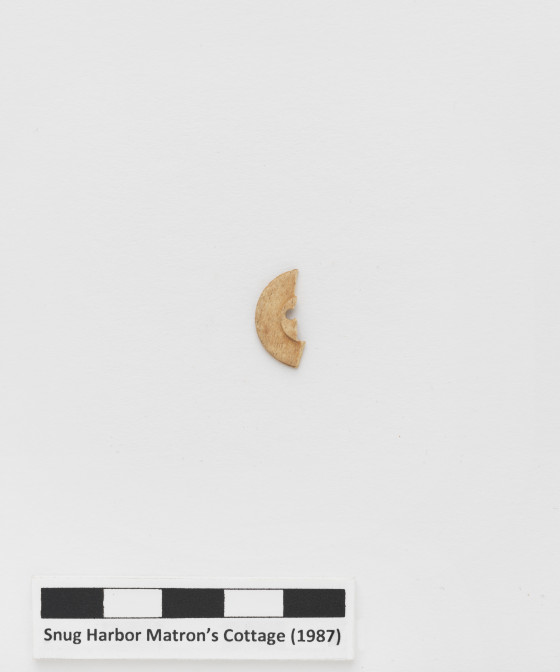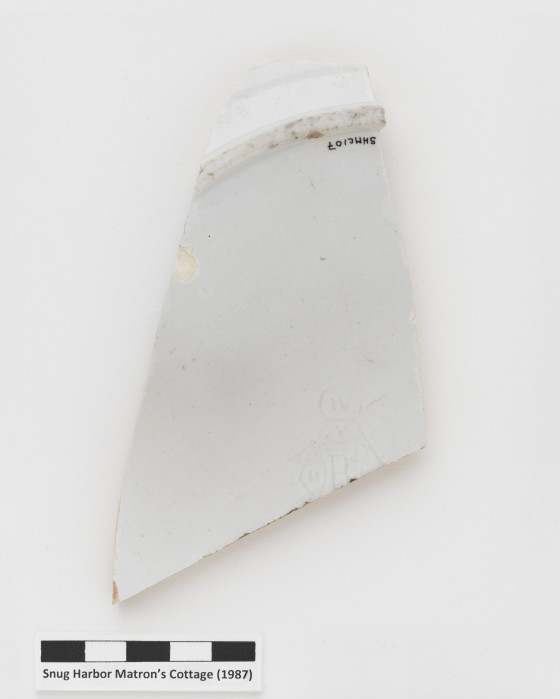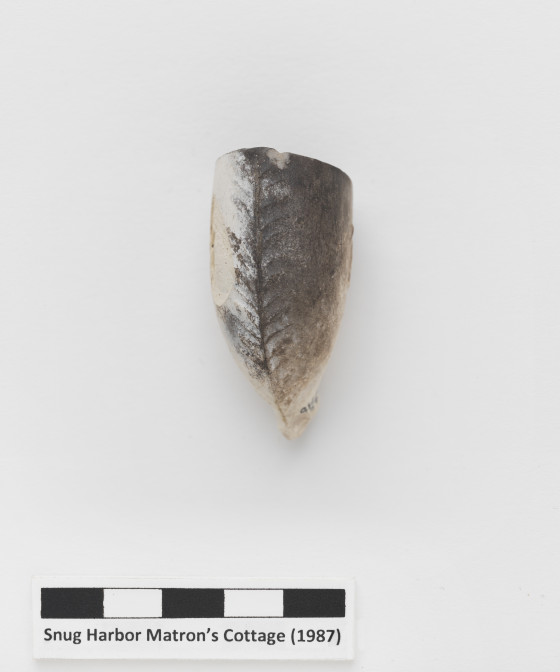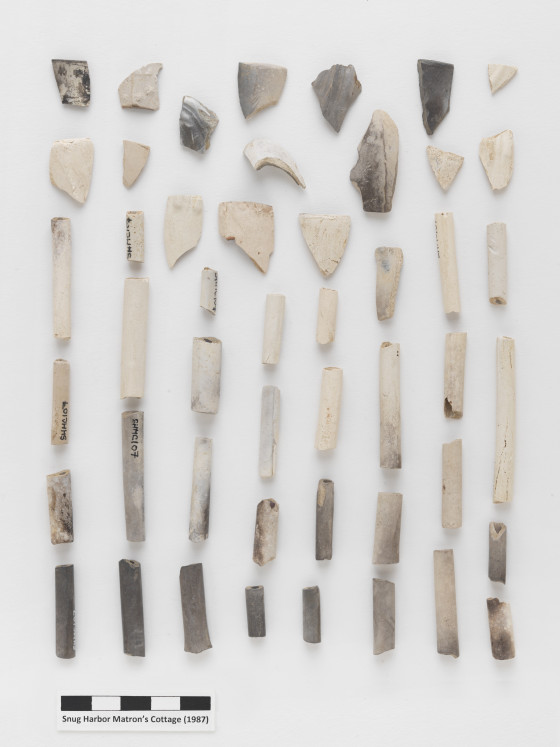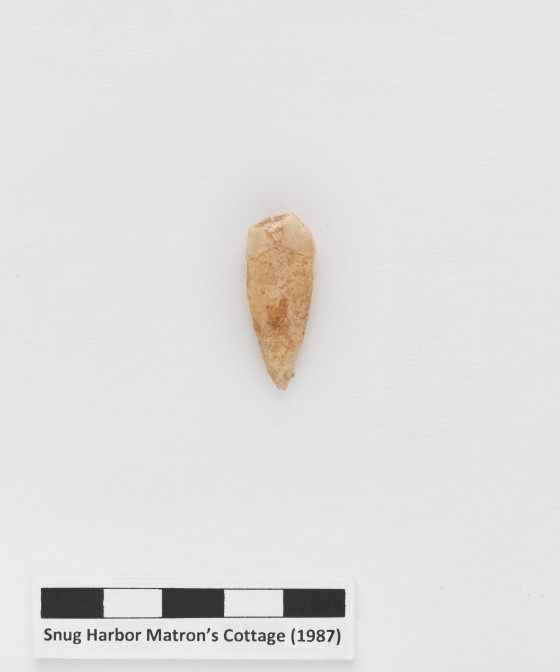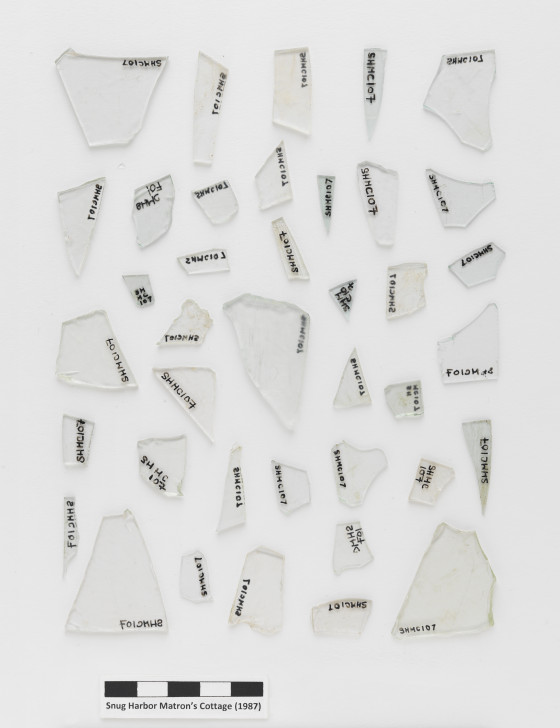This hand-crafted whistle was fashioned from the stem of a discarded clay smoking pipe. The crude carved hole displayed on the stem’s body allowed for airflow through the bore hole and helped produce a high-pitched sound when blown through one end. Larger, more elaborate flutes and whistles have been found from modified pipe stems in neighboring areas, including one from a late 17th century privy in lower Manhattan, as well as multiple smaller fragments from the Fort Orange site in downtown Albany. Although this pipe stem whistle was excavated with material dating from the late 19th century, whistles like this one were often crafted from smoking pipes by the Dutch and used as a means of trade with Native Americans. Small rustic flutes were frequently illustrated in Dutch paintings alongside depictions of clay tobacco pipes, indicating the prevalence of both of these items of material culture in the Dutch household. One instance of this association can be seen in Jan Steen’s Merry Family, depicting a 17th-century Dutch family partaking in a musical tradition at the kitchen table [see image #2]. The deposition suggests that this flute and whistle-making custom was perhaps continued through the generations, or that the deposit was mixed with material that dated to an earlier time period.
Second image credit: Object# SK-C-229, Jan Steen, The Merry Family, 1668, Rijksmuseum
-
Animals/objects
Whistle
-
Category
-
Class
Ceramic
-
Material
-
Context
-
Forms
Stem


